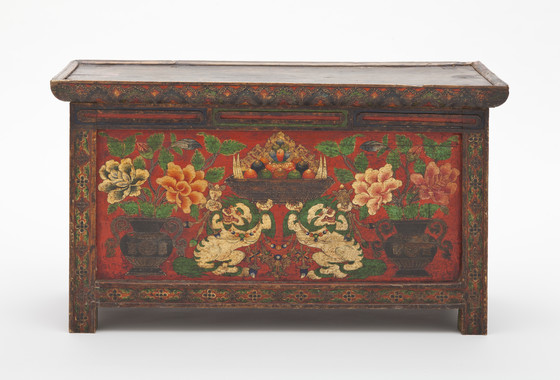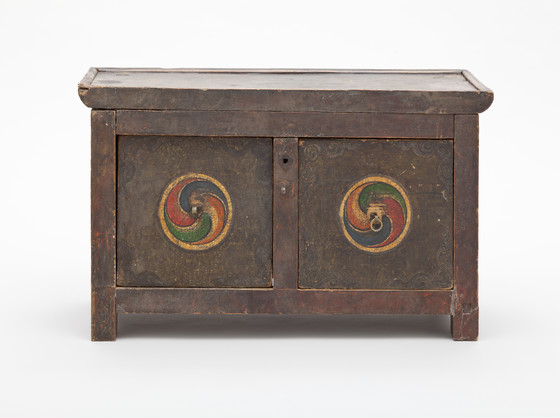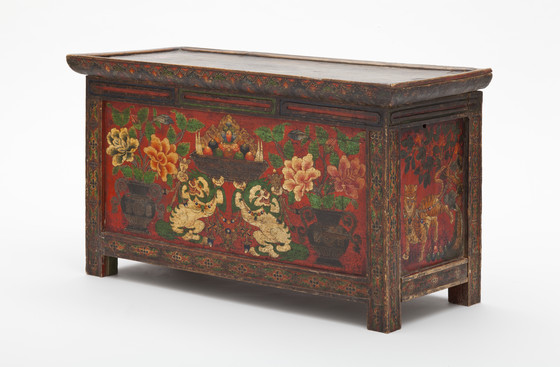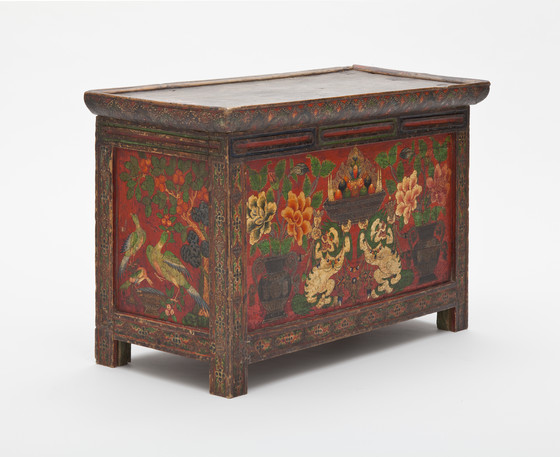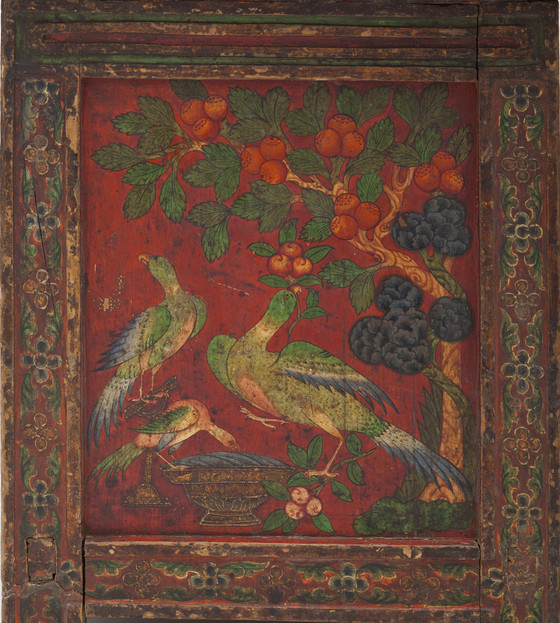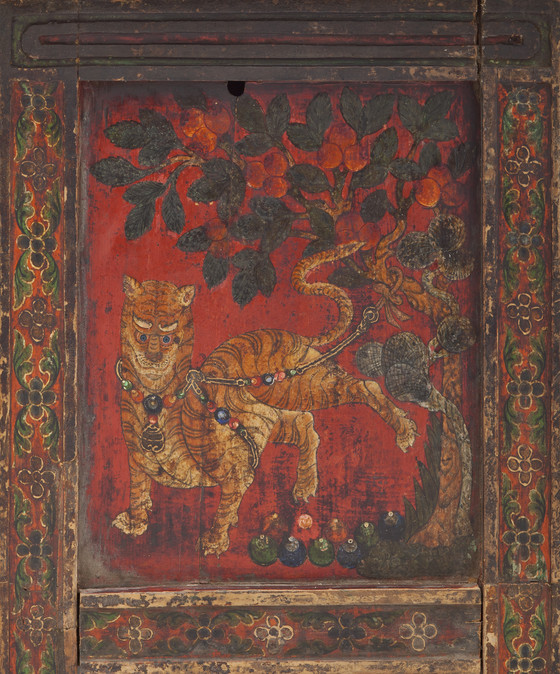Curator Notes
Tables were a quintessential accoutrement in Tibetan monasteries, temples, and shrines in many private homes. They facilitated religious ceremonies by displaying and storing various ritual objects, musical instruments, and offerings, and by supporting sacred texts to be read. See Tony Anninos, "Tibetan Tables: The Evolution of Style and Function," in David Kamansky, ed., Wooden Wonders: Tibetan Furniture in Secular and Religious Life (Pasadena: Pacific Asia Museum and Chicago: Serindia Publications, 2004), pp. 95-105.
This table is adorned on the front with painted and raised gesso decorations of animated snow lions supporting a bowl of wish-fulfilling gems with their inner paws and an auspicious conch shell and sacred water vessel with their outer paws. An ornamental swag of jewels dangles between them. The snow lions are flanked by a pair of wealth vases (yangbum) that are inscribed with Chinese characters, including the shou character for long life. Each vase is filled with burgeoning flowers. One end panel has three birds perched on a branch, display stand, and the rim of a bowl of offerings. The largest bird is eating fruit or precious gems from the tree above. The other end panel has a prancing tiger tethered to a tree with his hind leg raised. The back of the table has two doors embellished with multicolored yin-yang or taijitu symbols. The multicolored yin-yang symbols are a later conception than the earlier monochromatic yin-yang symbols and symbolize a greater range of creative energies in balance.
More...
